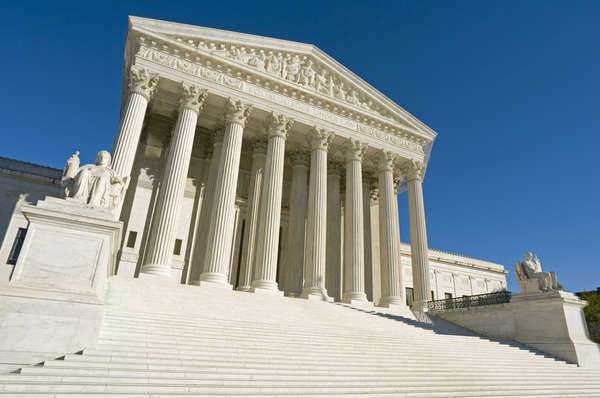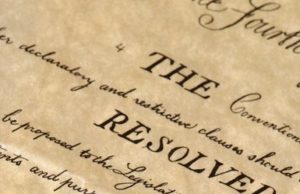
The Three-Fifths Compromise
Simplified Overview
The Three-Fifths Compromise stands as one of the most crucial decisions made in the early history of the United States. This agreement, which took place during the Constitutional Convention of 1787, had far-reaching implications for the nation’s political landscape, slavery, and representation. In this article, we will delve into what the Three-Fifths Compromise was, the historical context surrounding it, its consequences, and its legacy that continues to impact the United States to this day.
I. Understanding the Three-Fifths Compromise
1. Historical Background
The Three-Fifths Compromise, sometimes referred to as the 3/5 Compromise or the 3/5ths Compromise, was a critical element of the Constitutional Convention of 1787. The Convention was convened in Philadelphia with the primary aim of creating a more effective and stable system of government to replace the weak Articles of Confederation.
2. The Core Issue
At the heart of the Three-Fifths Compromise lay the contentious issue of slavery. The delegates from the Northern and Southern states were deeply divided over whether enslaved individuals should be counted when determining a state’s population for the purpose of representation in the newly proposed federal government.
3. The Compromise Itself
The Three-Fifths Compromise was proposed as a solution to this issue. It stipulated that for the purposes of representation and taxation, enslaved individuals would be counted as three-fifths of a person. This meant that for every five enslaved individuals, three of them would be included in the state’s total population count. This compromise was enshrined in Article 1, Section 2 of the United States Constitution.
II. The Rationale Behind the Compromise
1. Southern States’ Interests
The Southern states, where slavery was deeply entrenched, were primarily agrarian economies reliant on enslaved labor for their prosperity. They sought to maximize their representation in the new federal government, which would, in turn, safeguard their economic interests and political power.
2. Northern Concerns
In contrast, many Northern states had either abolished slavery or were in the process of doing so. They were concerned that if enslaved individuals were counted equally with free citizens, the Southern states would gain an unfair advantage in terms of representation. Therefore, they pushed for a compromise that would reduce the political influence of slaveholding states.
3. Balancing Act
The Three-Fifths Compromise represented a delicate balance between these opposing interests. It provided a means for Southern states to increase their representation while acknowledging the inherent injustice of treating enslaved individuals as less than full citizens.
III. Consequences of the Three-Fifths Compromise
1. Immediate Impact
The immediate effect of the Three-Fifths Compromise was an increase in the political power of the Southern states. This, in turn, had profound consequences for the nation’s early history, particularly in the areas of legislation and presidential elections.
2. Preservation of the Union
The compromise was, in part, an attempt to maintain the fragile unity of the newly formed United States. Without it, the Constitutional Convention might have dissolved, and the Union could have fallen apart.
3. Delaying the Resolution of Slavery
While the compromise helped preserve the Union, it also perpetuated the institution of slavery by reinforcing the notion that enslaved individuals were property to be counted as part of a state’s population. This delay in addressing the issue of slavery would ultimately lead to decades of conflict and division.
IV. The Legacy of the Three-Fifths Compromise
1. Abolitionist Movement
The Three-Fifths Compromise played a significant role in the emergence of the abolitionist movement in the United States. Abolitionists argued against the dehumanizing aspects of the compromise, using it as evidence of the moral and political corruption of slavery.
2. Civil War
The compromise and the broader issue of slavery it represented would eventually culminate in the American Civil War, a bloody conflict that sought to resolve the question of slavery’s future in the United States.
3. Emancipation Proclamation and 13th Amendment
The Civil War led to two pivotal developments in U.S. history: President Abraham Lincoln’s Emancipation Proclamation in 1863, which declared enslaved individuals in Confederate-held territory to be free, and the ratification of the 13th Amendment to the Constitution in 1865, which abolished slavery throughout the nation.
4. Struggles for Civil Rights
Even after the abolition of slavery, the legacy of the Three-Fifths Compromise persisted in the form of systemic racism and discrimination against Black Americans. It would take the Civil Rights Movement of the mid-20th century to address some of these issues and move the nation closer to its ideals of equality and justice.
V. Conclusion
The Three-Fifths Compromise was a pivotal moment in American history, one that highlights the complex and often painful journey toward forming a more perfect union. This compromise was a testament to the challenging compromises and negotiations that were necessary to forge the United States into a single nation.
While the Three-Fifths Compromise is a stark reminder of the nation’s past divisions and injustices, it also serves as a lesson about the importance of addressing difficult issues head-on, rather than deferring them. It took a civil war and many decades of struggle to begin rectifying the inequities embedded in the compromise.
Today, the United States continues to grapple with the legacy of the Three-Fifths Compromise. The ongoing conversations about racial equality, representation, and justice reflect the enduring impact of this historic decision on the nation’s identity and its ongoing quest for a more inclusive and equitable future.
The Continuing Relevance of the 3/5ths Compromise in Shaping the Future of the United States
The 3/5ths Compromise, a critical component of the United States Constitution forged during the Constitutional Convention of 1787, resolved the contentious issue of how enslaved persons would be counted for the purposes of apportioning representatives and taxes among the states. Despite its evolution and eventual repeal, the 3/5ths Compromise continues to hold relevance in contemporary discussions and debates surrounding equality, racial justice, voting rights, and representation. This essay explores the enduring importance of the 3/5ths Compromise in shaping the future of the United States and its impact on social, political, and legal dimensions of American society.
Historical Context:
The 3/5ths Compromise emerged from the deeply entrenched institution of slavery that existed during the founding era of the United States. The compromise sought to reconcile the competing interests of Northern and Southern states, with the latter desiring to count enslaved individuals as full persons for representation purposes while disregarding their humanity and denying them basic rights. Ultimately, the compromise mandated that each enslaved person would be counted as three-fifths of a person, effectively acknowledging their partial humanity while perpetuating the oppressive system of slavery.
Impact on Constitution and Governance:
1. Representation and Electoral College:
The 3/5ths Compromise had a significant impact on the Constitution’s allocation of representation and electoral power. It created a system where Southern states wielded disproportionate influence in Congress due to increased representation based on their enslaved populations. The resulting overrepresentation of slaveholding states would play a role in shaping national policies, fueling sectional tensions, and contributing to the eventual eruption of the American Civil War.
2. Racial Equity and Justice:
The 3/5ths Compromise serves as a stark reminder of the long history of racial inequality and systemic racism within the United States. It laid the groundwork for a legacy of racial discrimination and injustice, permeating nearly every aspect of American society, including education, criminal justice, and economic opportunities. The compromise’s perpetuation of racial disparities contributed to the struggle for racial equity and justice that continues to shape the future of the nation.
Contemporary Relevance:
1. Voting Rights and Gerrymandering:
The 3/5ths Compromise serves as a historical benchmark for understanding the trajectory of voting rights in the United States and the ongoing struggle for inclusive and equal access to the ballot box. The disproportionate representation and political power allotted to slaveholding states perpetuated systemic disenfranchisement of African Americans throughout history. Even today, allegations of voter suppression and racially motivated gerrymandering persist, necessitating continued efforts to safeguard and expand democratic participation.
2. Equality and Civil Rights:
The 3/5ths Compromise highlights the battle for equality and civil rights in America, transcending its original context to inspire important social movements. The Civil Rights Movement of the 20th century echoed the struggles of marginalized communities, challenging the systemic racism embedded within the country’s legal and social structures. By recognizing the enduring impact of the 3/5ths Compromise, society remains vigilant in working towards dismantling structural inequalities, promoting inclusivity, and advancing civil rights for all.
3. Constitutional Interpretation and Originalism:
The 3/5ths Compromise has played a crucial role in shaping debates regarding constitutional interpretation and the principle of originalism. Originalists argue that the Constitution should be understood and applied based on its original meaning and intent, including acknowledgment of the compromises made during the founding era. The controversy surrounding the 3/5ths Compromise prompts ongoing discussions about the relevance and application of originalism in a modern diverse society.
Conclusion:
The 3/5ths Compromise, while deeply flawed and morally unacceptable, continues to hold relevance in the contemporary United States. Its historical significance serves as a reminder of the country’s origins in a struggle against the inequality inherent in the institution of slavery. Analyzing the impact and legacy of the compromise illuminates the ongoing fight for racial justice, voting equality, and the quest for a more inclusive society. By acknowledging the lasting effects of this compromise, we can strive towards a future that embraces equality, rectifies historical injustices, and ensures justice and liberty for all Americans.
Cases Involving the 3/5th Compromise
The Three-Fifths Compromise was a controversial decision made during the writing and ratification of the United States Constitution in 1787. The Compromise determined how slaves would be counted in the population and how the number of representatives in the House of Representatives would be calculated. The decision was heavily criticized at the time and has continued to be debated throughout the country’s history. In recent years, there have been several cases that have brought the Three-Fifths Compromise into the spotlight once more.
Background of the Three-Fifths Compromise
The Three-Fifths Compromise was proposed during the Constitutional Convention in Philadelphia in 1787. The issue was how to count slaves in the population of the states for the purpose of representation in the House of Representatives. The Northern states argued that slaves should not be counted at all, as they were not considered citizens and did not have the right to vote. The Southern states, on the other hand, argued that slaves should be counted as full citizens, as they wanted to have more representatives in Congress.
The final decision was the Three-Fifths Compromise, which determined that slaves would be counted as three-fifths of a person for the purpose of representation in the House of Representatives. This meant that every five slaves would be counted as three people. The Compromise also determined that the number of representatives in the House of Representatives would be based on the total population of each state, including the three-fifths count of slaves.
Criticism of the Three-Fifths Compromise
The Three-Fifths Compromise was heavily criticized at the time of its creation and has continued to be a divisive issue in the United States. Critics argued that it was morally wrong to count slaves as part of the population without giving them the right to vote. The Compromise also institutionalized slavery, as it gave slave states extra representation in Congress and allowed them to maintain their “peculiar institution.”
In recent years, there have been several cases that have brought the Three-Fifths Compromise into the spotlight once more. These cases explore the legacy of the Compromise and its impact on modern politics and society.
The Shelby County v. Holder Case
The Shelby County v. Holder case, which was decided by the Supreme Court in 2013, focused on the Voting Rights Act of 1965. The Act was designed to protect the voting rights of African Americans and other minorities, and it banned discriminatory voting practices such as literacy tests and poll taxes. The Act also required certain states and counties to obtain federal approval before making any changes to their voting procedures, including changes to voting districts, polling places, and voting times.
The issue in the Shelby County v. Holder case was whether this federal preclearance requirement was still necessary. Shelby County, Alabama, argued that the requirement was outdated and violated the state’s sovereignty. The Supreme Court agreed and struck down the requirement, stating that it was no longer necessary given the progress that had been made in protecting voting rights.
Critics of the decision pointed out that it would make it easier for states to institute discriminatory voting practices, particularly in states with a history of discrimination against minorities. They argued that the decision effectively gutted the Voting Rights Act and made it more difficult to ensure equal access to the ballot box.
The Gill v. Whitford Case
The Gill v. Whitford case, which was decided by the Supreme Court in 2018, focused on partisan gerrymandering. Gerrymandering is the process of manipulating voting districts to favor one political party over another. In the case of the Three-Fifths Compromise, the extra representation given to slave states enabled them to maintain their political power and influence in Congress.
The issue in the Gill v. Whitford case was whether partisan gerrymandering was unconstitutional. The plaintiffs argued that the state of Wisconsin had drawn its voting districts in such a way that it had effectively silenced the votes of Democratic-leaning citizens. The Supreme Court ultimately ruled that it did not have the jurisdiction to decide the case, leaving the issue of partisan gerrymandering unresolved.
Critics of the decision argued that it would make it more difficult to combat partisan gerrymandering and ensure fair representation in Congress. They argued that the decision effectively allowed politicians to continue to manipulate voting districts for their own political gain.
The Rucho v. Common Cause Case
The Rucho v. Common Cause case, which was decided by the Supreme Court in 2019, also focused on partisan gerrymandering. The plaintiffs argued that the state of North Carolina had drawn its voting districts in such a way that it had effectively silenced the votes of Democratic-leaning citizens.
The issue in the case was whether the federal courts had the authority to decide cases involving partisan gerrymandering. The Supreme Court ultimately ruled that it did not, stating that gerrymandering was a political issue that was best addressed by the elected branches of government, not the courts.
Critics of the decision argued that it would make it even more difficult to combat partisan gerrymandering and ensure fair representation in Congress. They argued that the decision effectively left citizens without a legal recourse to challenge gerrymandering and ensure that their votes were counted.
Conclusion
The legacy of the Three-Fifths Compromise continues to be felt in the United States today, particularly in cases involving voting rights and representation in Congress. The Compromise institutionalized slavery and gave slave states extra representation in Congress, enabling them to maintain their political power and influence. While the Compromise was heavily criticized at the time of its creation, its legacy has continued to be a divisive issue in the country’s history. The recent cases involving the Voting Rights Act and partisan gerrymandering have brought the Compromise back into the spotlight, highlighting the ongoing struggle for equal representation and access to the ballot box.
The 3/5 Compromise: Navigating a Divided Nation Through Representation
The 3/5 Compromise, an intricate facet of American history, emerged as a critical solution to a deeply divisive issue that permeated the fabric of the young nation. Rooted in the question of how enslaved individuals should be counted for the purpose of apportioning representation in Congress, this compromise highlights both the complexities of the time and the delicate balancing act that sought to unify a fledgling nation while acknowledging the fraught institution of slavery.
At the heart of the 3/5 Compromise lay the fundamental struggle between the Northern and Southern states over the issue of slavery. The Southern states, with their agrarian economies reliant on enslaved labor, sought to maximize their representation in the House of Representatives, leveraging their enslaved populations as a means to bolster their political influence. The Northern states, on the other hand, grappled with the moral and ethical implications of recognizing enslaved individuals as part of the population for the purposes of representation.
In this charged atmosphere, the Constitutional Convention of 1787 convened in Philadelphia to deliberate over the creation of a new government. The issue of counting enslaved individuals for representation emerged as a formidable hurdle, threatening to derail the entire endeavor. The solution, borne out of the need to forge a compromise between the two sides, culminated in the 3/5 Compromise.
The compromise stipulated that enslaved individuals would be counted as three-fifths of a person for the purpose of determining both representation in the House of Representatives and direct taxes levied by the federal government. This seemingly arbitrary fraction was a product of negotiation, reflective of the prevailing power dynamics and the desire to strike a balance that would keep the nation intact. The compromise ensured that the Southern states would have greater representation than if only their free population was considered, while also acknowledging the moral complexity of counting enslaved individuals as full citizens.
The 3/5 Compromise was undoubtedly a pragmatic solution that held the fragile union together, but it also carried deep implications for the nation’s future. It recognized the uncomfortable reality that slavery was not merely a Southern institution but an integral part of the nation’s economy and political landscape. Moreover, it set the stage for an ongoing tension between the North and the South, one that would eventually erupt into the devastating conflict of the Civil War.
While the compromise achieved its immediate goal of forming a more perfect union, its legacy is marred by the perpetuation of an oppressive system. The 3/5 Compromise perpetuated the dehumanization of enslaved individuals, reducing their worth to a fraction in the eyes of the government. It underscores the tragic contradiction between the lofty ideals of freedom and equality espoused by the Declaration of Independence and the reality of a nation built on the subjugation of a portion of its population.
The 3/5 Compromise’s significance extends beyond its immediate impact on representation and taxation. It serves as a poignant reminder of the complexities inherent in nation-building and the challenges of balancing diverse interests and ideologies. It raises timeless questions about the morality of compromise, particularly when confronted with deeply entrenched injustices. The compromise also prompts us to critically examine the role of leadership and decision-making in times of crisis, as well as the long-term consequences of such decisions.
Ultimately, the 3/5 Compromise stands as a testament to the intricate nature of compromise in a democratic society. It demonstrates the lengths to which leaders are willing to go to preserve unity and stability, even when faced with profound moral dilemmas. It also highlights the painful trade-offs that accompany compromise, as well as the imperative of continuously striving for a more just and equitable society.
As we reflect on the 3/5 Compromise, it is essential to approach its legacy with nuance and understanding. It serves as a cautionary tale, reminding us of the dangers of allowing deeply rooted injustices to persist in the name of political expediency. It also underscores the importance of engaging in ongoing conversations about representation, equality, and justice to create a more inclusive and equitable society. The 3/5 Compromise, while deeply flawed, provides a compelling historical lens through which we can examine the complexities of compromise and its lasting impact on the American experience.
The proposal for apportionment for the determination of each state’s number of seats in the House of Representatives became an issue when the Constitution was being drafted in 1787. Aside from being a complex system and method for calculating the population through the census and then establishing a number of seats for representation, the issue as to who was eligible to be counted for the population was a topic of controversy. However, it is no surprise that this agreement is known as the Three-Fifths Compromise, for the Constitution itself was born out of a compromise between the Framers of the Constitution.
However, the Three-Fifths Compromise is arguably the most controversial topic, for its delegates that all slaves of a particular state are to be counted as three-fifths of a white person. The population of slaves would be counted as three-fifths in total when apportioning Representatives, as well as Presidential electors and taxes.
The Three-Fifths Compromise was proposed by James Wilson and Roger Sherman, who were both delegates for the Constitutional Convention of 1787. However, the Three-Fifth Compromise has its roots further back in history, dating back to the Continental Congress in 1783. The Compromise was a result of the apportionment of taxes being related to land values.
Initially, taxes were levied not in accordance with the population numbers, but the actual value of the land. Many states began to depreciate the value of the land in order to provide relief from their taxes. A committee was held that would rectify the situation by implementing the apportionment of taxes in relation to the state’s population. However, this idea was met with the dispute over how to consider slaves in the apportionment process and the actual ratio of slaves to free people at that time.
For the most part, those who opposed slavery only wanted to consider the free people of a population, while that in favor wanted to include slaves in the population count. This would provide for slaveholders to have many more seats in the House of Representatives and more representation in the Electoral College. Many ratios were considered, such as three-fourths, one-half, and one-quarter. After much debate, it would be James Madison that would suggest the Three-Fifths Compromise. However, the Three-Fifths Compromise would not be adopted until the Constitutional Convention because the Compromise was not approved by all of the states and the Articles of Federation required a unanimous vote.
The implementation of the Three-Fifths Compromise would greatly increase the representation and political power of slave-owning states. The Southern states, if represented equally, would have accounted for 33 of the seats in the House of Representatives. However, because of the Three-Fifths Compromise, the Southern states accounted for 47 seats in the House of Representatives of the first United States Congress of 1790. This would allow the South to garner enough power at the political level, giving them control in Presidential elections.
However, as time moved forward, the Three-Fifths Compromise would not provide the advantage for which the Southern states and slave-owners had hoped. The Northern states grew more rapidly in terms of population than the South. Even though Southern states had essentially dominated all political platforms prior to the Civil War, afterward that control would be relinquished slowly but surely. It would not be until the Thirteenth Amendment to the United States Constitution was be enacted in 1865 that the Three-Fifths Compromise would be rendered obsolete.




















